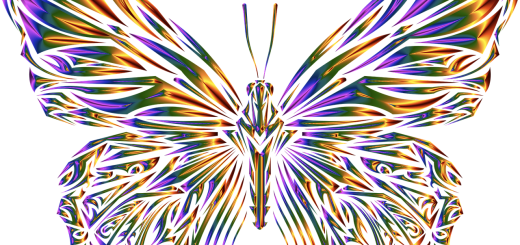How Pets Have Influenced Art, Music, and Literature

Before diving in, please note: This post is for informational purposes only. If you’d like to know more about how we approach topics, feel free to check out our friendly Disclaimer Page.
Hey there, amazing readers! 🖐️ Just a quick note: yes, we know there are a lot of ads here. Trust us, we get it—it’s not the prettiest look, but they help us keep this blog alive and kicking. Those pesky little ads cover the costs of all the behind-the-scenes magic, from hosting and tech stuff to creating content we hope you’ll love.
We’re committed to delivering quality posts, and your support (even just sticking around despite the ads) means everything to us. So, bear with us, and thanks for helping us keep the good vibes rolling. Now, on to the fun stuff! 😉
TRANSLATE BUTTON AT THE END OF THE ARTICLE
A Quick Overview
Pets have been companions for humanity for thousands of years.
They provide us with comfort, joy, and unconditional love.
But their influence goes beyond our personal lives; pets have significantly shaped the landscape of art, music, and literature.
They have inspired countless creators and become symbols of various themes, from loyalty to freedom.
So, let’s dive into how our furry, feathered, and scaly friends have made their mark in these creative realms.
The Enduring Bond: Pets as Artistic Muses
The relationship between humans and pets has always inspired artistic expression.
Artists from various cultures have turned to their beloved animals for inspiration.
This bond forms a unique connection that translates into art, music, and literature.
The emotions tied to this companionship—love, joy, and even loss—have sparked creativity in countless works.
Can you think of a more heartwarming image than a canine companion curled up next to its owner?
This is the kind of scene that has captivated artists for centuries.
Whether it’s a master painting or a simple sketch, pets evoke profound feelings that artists strive to capture.
Today, the bond we share with our pets is more visible than ever in contemporary art, where pet portraits and pet-themed exhibitions have taken center stage.
Moreover, the presence of pets in artistic expression transcends mere aesthetics.
Their loyalty, playfulness, and comfort often reflect the emotional states of their human counterparts.
For instance, in times of grief or hardship, artists may find solace in the companionship of their pets, leading to works that explore themes of resilience and hope.
The impact of pets on creativity is not limited to visual arts.
Writers, musicians, and composers have also found inspiration in the tales of their beloved companions.
The joy of observing a pet’s antics or the tranquility of sharing a quiet moment can ignite a spark of imagination, leading to the creation of heartfelt narratives and melodies.
So, pets are more than just animals in our homes; they’re vital sources of inspiration.
They help us explore our emotions, reflect on our experiences, and connect with others on profound levels.
Through arts, we celebrate the companionship that enriches our lives.
Historical Perspectives: Pets in Ancient Art Forms
Pets have made their way into artistic expressions long before modernity.
Ancient civilizations had a deep appreciation for animals, often reflecting their significance in art forms.
For example, ancient Egyptians revered cats, elevating them to the status of deities.
Artifacts like sculptures and paintings portrayed these animals, highlighting their importance in daily life and spiritual beliefs.
In ancient Rome, dogs were depicted in mosaics and frescos, often showcasing their loyalty and companionship.
These art forms communicated the vital relationship between humans and pets.
The Romans even placed intricate images of their beloved dogs in tombs, signifying their enduring bond even in death.
During the Renaissance, artists began to depict pets in a more personal way.
Works by masters like Albrecht Dürer often featured animals as symbols of status and virtue.
Discover "Dog Care: Learning How to Care for Your Furry Friend 🐾"
The inclusion of pets in portraits served as a reflection of the owner’s personality and social standing.
It was common for nobility to be portrayed with their pets, signaling both affection and a connection to nature.
Throughout history, pets have not only been companions but also reflections of societal values.
In various cultures, pets represented loyalty, protection, and even companionship in the afterlife.
Ancient texts and artworks reveal that the bond between humans and pets has always been multi-faceted; it encompasses love, reverence, and sometimes even a spiritual connection.
This historical appreciation for pets helped lay the foundation for their portrayal in modern art.
From ancient depictions to contemporary works, the evolution of pets as artistic subjects mirrors our growing understanding of their role in our lives.
The Purr-fect Influence: Cats in Literature and Poetry
Cats have a fascinating legacy in literature and poetry.
They often symbolize mystery, independence, and grace.
Writers have long been enchanted by felines, crafting narratives that highlight their enigmatic nature.
Take, for instance, T.S.
Eliot’s "Old Possum’s Book of Practical Cats," a whimsical collection celebrating the quirks of various cats.
Eliot’s work captures the essence of feline personalities while tickling our fancy.
Moreover, famous authors like Ernest Hemingway and Edgar Allan Poe had strong connections with cats.
Hemingway was known for his love of polydactyl cats, often featuring them in his life and writings.
Meanwhile, Poe’s story "The Black Cat" explores themes of guilt and the supernatural, showcasing the darker side of our furry friends.
Cats have also inspired poets through the ages.
The gentle rhythm of their purring seems to resonate in verses that evoke tranquility and contemplation.
Consider the haikus dedicated to our feline companions that capture their playful antics with brevity and beauty.
In modern literature, cats continue to appear in various genres, from children’s books to literary fiction.
They often serve as symbols of comfort or quirky sidekicks, adding depth and warmth to narratives.
Their presence allows authors to explore complex emotions and themes in relatable ways.
Whether it’s through poetry or prose, cats undoubtedly hold a special place in literary history.
They’ve inspired writers to embrace creativity and delve into the unique bond we share with our feline friends.
Dogs in the Limelight: Canine Companions in Art
Dogs have long been celebrated as loyal companions, and their depiction in art reflects this unwavering bond.
From ancient civilizations to contemporary pieces, dogs have been portrayed in various styles, each capturing their loyalty and protective instincts.
For instance, Francisco Goya’s painting "The Dog" brilliantly encapsulates the emotional connection between humans and their canine friends.
In literature, dogs have served as symbols of loyalty and courage.
Think of the classic tale "The Call of the Wild" by Jack London.
The story beautifully illustrates the bond between man and dog in the wilderness, emphasizing themes of survival and companionship.
It’s a stirring reminder of how dogs have been seen as noble creatures throughout history.
Moreover, the visibility of dogs in pop culture has only increased over time.
Films like "Lassie" and "Old Yeller" showcase the heroic qualities of dogs, fostering admiration and affection for these animals.
Their portrayal often mirrors the human condition, capturing the essence of friendship and unconditional love.
Dogs also inspire artists to create heartwarming scenes that resonate with audiences.
Whether it’s a playful pup chasing a ball or a solemn hound gazing into the distance, these images evoke a range of emotions, from joy to nostalgia.
They remind us of the simple pleasures found in the companionship of our four-legged friends.
Additionally, dogs in art have served to highlight cultural values.
Their representations reflect societal norms and expectations, showcasing how humans perceive loyalty and protection across different cultures.
This historical perspective enhances our understanding of the integral role dogs have played in human life.
As we continue to celebrate dogs in various forms of art, their impact will only grow.
They remain steadfast companions and creative muses, inspiring us to explore themes of love, loyalty, and companionship.
From Canvas to Composition: Pets in Music History
Pets have also influenced the world of music in profound ways.
Composers and musicians have often turned to their beloved animals for inspiration, resulting in beautiful melodies and heartfelt lyrics.
Many famous pieces have been written as tributes to pets, showcasing the emotional connections that form between humans and animals.
Take Ludwig van Beethoven, for instance.
His beloved dog, a Newfoundland named "Gigi," inspired some of his most heartfelt compositions.
Beethoven’s love for Gigi was palpable, and the bond he shared with his furry friend influenced his creative process, leading to works that conveyed deep emotion and passion.
In contemporary music, artists continue to draw inspiration from their pets.
Taylor Swift has written songs that reflect her experiences with her cats, incorporating their personalities into her lyrics.
Similarly, musicians like Snoop Dogg and Pharrell Williams have also featured their dogs prominently in their songs or music videos, exploring themes of companionship and loyalty.
Moreover, animals often serve as symbols in musical compositions.
For example, "The Four Seasons" by Vivaldi includes movements that reflect the beauty of nature and the animal kingdom.
The music evokes imagery of animals in their habitats, enhancing our appreciation for the world around us.
Pets also have a way of comforting musicians during moments of creative block.
The simple act of petting a dog or cat can inspire new melodies or lyrics.
Many artists find that their pets help alleviate stress, allowing them to tap into their creativity more freely.
As we listen to music, we often find ourselves reflecting on our personal experiences with pets.
Their presence not only enriches our lives but also shapes the narratives conveyed in melodies, reminding us of the enduring bond we share with our animal companions.
Whiskers and Brushes: Famous Pet Portraits Explained
When it comes to art, pet portraits have a unique charm.
These works often capture the essence of our beloved animals, preserving their likeness for generations to come.
Renowned artists throughout history have created stunning pet portraits that evoke emotion and connection.
Consider the iconic 18th-century artist Sir Edwin Landseer, known for his lifelike portrayals of dogs.
His works exude a warmth and affection that resonates with viewers.
Landseer’s paintings often depicted the nobility and loyalty of dogs, highlighting their importance as companions in society.
In the contemporary art scene, pet portraits remain popular.
Artists like Samantha Lee and Yoshiko Yamamoto have gained recognition for their ability to capture the soul of pets on canvas.
Their vibrant colors and unique styles breathe life into their subjects, allowing pet owners to cherish their furry companions forever.
Moreover, pet portraits often serve as a reflection of the owner’s personality.
A whimsical portrait of a dog dressed in a tuxedo can reflect the owner’s sense of humor, while a serene depiction of a cat lounging in sunlight may signify tranquility.
These portraits tell stories that go beyond the surface, revealing the bond shared between pet and owner.
Pet portraiture also plays a role in highlighting animal welfare issues.
Many artists use their talents to raise awareness and funds for animal shelters and rescue organizations.
By purchasing pet portraits, art lovers contribute to a cause that resonates with their passion for animals.
In essence, pet portraits serve as heartfelt reminders of the connections we share with our animals.
They allow us to celebrate our love for pets while preserving cherished memories through art.
Literary Legends: Notable Authors and Their Pets
Throughout literary history, some of the greatest authors have shared their lives with pets, forging bonds that influenced their works.
Take Virginia Woolf, who had a love for cats and often wrote about their elegance and independence.
Her feline companions provided her with comfort and inspiration, shaping her writing style and themes.
Another notable example is Mark Twain, who had a deep affection for dogs.
He often wrote about their loyalty and intelligence, reflecting his own experiences with his beloved pets.
Twain’s tales of dogs capture the joy and humor of their antics, reminding us of the cherished moments shared with our furry friends.
Additionally, Charles Dickens had a penchant for animals, often including them in his narratives.
His beloved dog, a terrier named "Bob," was a constant companion.
Dickens’ portrayal of animals often emphasized their role in human lives, adding depth to his characters and stories.
More recently, authors like Neil Gaiman and J.K.
Rowling have shared their love for pets through social media and public engagements.
Gaiman often mentions his cats in interviews, while Rowling’s Harry Potter series features a loyal dog named Sirius Black, highlighting the importance of companionship in her narratives.
These literary legends show us that pets are not just animals; they are integral to the creative process.
They provide companionship, comfort, and inspiration that help authors delve into their work and share relatable, heartfelt stories with readers.
The Joy of Pets: Inspiring Uplifting Musical Themes
Pets often serve as symbols of joy and happiness in music.
Their playful antics and unwavering loyalty inspire uplifting themes that resonate deeply with listeners.
Many songs encapsulate the joy of companionship, celebrating the bond between humans and animals.
Take "Who Let the Dogs Out" by Baha Men, for example.
This catchy tune celebrates the fun and energy of dogs, inviting everyone to join in on the excitement.
It’s a perfect anthem for dog lovers, evoking memories of playful moments with our pets.
Similarly, Pharrell Williams’ "Happy" encapsulates the joy pets bring into our lives.
The happiness associated with pets often finds its way into musical compositions, allowing artists to share their experiences and emotions with a broader audience.
Moreover, musical genres like country and folk often explore themes of companionship and love for pets.
Songs about dogs riding shotgun or cats curling up on laps evoke feelings of warmth and nostalgia, reminding us of the simple pleasures of sharing life with our pets.
Pets also inspire artists to create uplifting melodies that reflect their personalities.
The playful energy of a puppy or the calming presence of a cat can influence the tempo and mood of a piece, making it relatable and enjoyable for listeners.
Ultimately, pets have a remarkable ability to uplift our spirits, and this is beautifully reflected in the music we cherish.
They remind us of the importance of joy, love, and companionship, themes that resonate across cultures and generations.
Playful Prose: Pets in Children’s Literature
Children’s literature is replete with delightful stories featuring pets that capture the imaginations of young readers.
These tales often explore themes of friendship, adventure, and responsibility, providing valuable lessons in a fun and engaging way.
Think of classics like "Charlotte’s Web" by E.B.
White, where the friendship between Wilbur the pig and Charlotte the spider teaches children about loyalty and sacrifice.
The charm of animal characters resonates with young readers, sparking their love for literature.
Another beloved example is "The Poky Little Puppy" by Janette Sebring Lowrey.
This charming story introduces children to a curious puppy’s adventures, emphasizing curiosity, exploration, and the value of friendship.
It’s a great way to engage young minds while teaching important life lessons.
Pets also play a vital role in teaching empathy and responsibility.
Books like "Martha Speaks" by Susan Meddaugh encourage children to care for their pets and understand their needs.
These stories turn pets into relatable characters, fostering a deeper connection between young readers and their furry friends.
Moreover, the whimsy of tales like "The Cat in the Hat" by Dr.
Seuss introduces children to the joy of imagination, showcasing the playful side of pets.
The enchanting narratives encourage creativity and spark a love for reading that lasts a lifetime.
Through the lens of children’s literature, pets become more than just animals; they embody lessons of love, curiosity, and kindness.
These stories have the power to shape young minds and create lifelong bonds with literature.
Cultural Reflections: Pets in Global Art Movements
Pets hold a special place in various cultural movements around the globe, reflecting societal values and artistic trends.
From the ancient to modern times, artists have depicted pets in ways that resonate with their cultural context.
In Japanese culture, for instance, the "maneki-neko" or beckoning cat symbolizes good fortune.
The imagery of cats in art reflects their cultural significance, showcasing their role in bringing joy and prosperity to households.
In Western art movements like Impressionism, pets often appeared in works that portrayed everyday life.
Artists like Pierre-Auguste Renoir included dogs and cats in their pieces, capturing candid moments that resonate with viewers.
These depictions highlight the joy of domestic life and the bond between humans and animals.
Furthermore, in African art, animals often symbolize spiritual beliefs and cultural practices.
Dogs and cats are commonly represented in traditional crafts, showcasing their importance in rituals and daily life.
These artistic expressions provide insight into the relationships between humans and pets across cultures.
In contemporary art, the representation of pets continues to evolve.
Artists like William Wegman focus on the quirky personalities of Weimaraner dogs, creating humorous and thought-provoking pieces that celebrate the joyful quirks of pets.
Through these cultural reflections, we gain a deeper understanding of how pets influence art movements.
They serve as symbols of companionship, loyalty, and joy, allowing artists to explore complex emotions and cultural values.
The Emotional Connection: Pets and Creative Expression
The emotional connection we share with our pets profoundly impacts our creative expression.
Many artists and writers find that their pets provide comfort and inspiration during challenging times.
The simple act of spending time with a pet can evoke a sense of peace and clarity that fuels creativity.
For instance, the presence of a dog during writing sessions may foster a relaxed environment, allowing writers to tap into their emotions and articulate their thoughts more freely.
This connection often leads to heartfelt stories and profound reflections on life, love, and companionship.
Pets also serve as a source of comfort during difficult times.
Artists experiencing grief or loneliness may turn to their pets for solace, leading to works that explore themes of loss and healing.
The companionship of an animal can be a lifeline, making it easier to navigate complex emotions.
Moreover, the playful antics of pets can serve as a source of joy and laughter, allowing artists to embrace their whimsical side.
Many creators find inspiration in the everyday moments shared with their pets, turning mundane experiences into delightful narratives.
This emotional bond extends beyond individual creativity.
Communities of artists often come together to celebrate their love for pets through collaborative projects and exhibitions.
These endeavors emphasize the importance of companionship and showcase the profound impact pets have on our lives.
In essence, the emotional connection we share with our pets is a wellspring of creative inspiration.
They remind us to embrace our feelings, explore our experiences, and express our love through our art.
Celebrating Companionship: The Legacy of Pets in Arts
The legacy of pets in art, music, and literature is rich and enduring.
From ancient civilizations to contemporary expressions, pets have played a pivotal role in shaping creative works that resonate across cultures and generations.
Their influence is felt in the narratives we share, the melodies we create, and the images we paint.
As we continue to celebrate the companionship of our furry, feathery, and scaly friends, it’s essential to recognize the depth and breadth of their impact on our creative journeys.
Whether through heartwarming pet portraits, whimsical children’s stories, or soulful melodies, the bond we share with our pets inspires us to explore and express our emotions.
Pets remind us of the beauty in simplicity.
They teach us about love, loyalty, and the joy of companionship.
As we reflect on the ways they’ve influenced art, music, and literature, we celebrate the unique connections that enrich our lives.
So, let’s cherish our pets and the inspiration they bring to our creative endeavors.
They are not just companions but also muses that fuel our imagination and enrich our artistic expressions.
Here’s to the timeless legacy of pets in the arts and the joy they bring to our lives!
Conclusion
Pets have woven themselves into the fabric of our creative expressions, influencing art, music, and literature throughout history.
Their enduring presence serves as a reminder of the joy, companionship, and love they bring into our lives.
From ancient depictions to modern masterpieces, our furry friends continue to inspire creators across generations.
By celebrating the bond we share with our pets, we not only honor their significance in our lives but also acknowledge their profound impact on the creative world.
As we move forward, let’s carry this legacy with us, creating more heartfelt art, soulful music, and enchanting stories that reflect the love and joy our pets bring to our lives.

The Enlightenment Journey is a remarkable collection of writings authored by a distinguished group of experts in the fields of spirituality, new age, and esoteric knowledge.
This anthology features a diverse assembly of well-experienced authors who bring their profound insights and credible perspectives to the forefront.
Each contributor possesses a wealth of knowledge and wisdom, making them authorities in their respective domains.
Together, they offer readers a transformative journey into the realms of spiritual growth, self-discovery, and esoteric enlightenment.
The Enlightenment Journey is a testament to the collective expertise of these luminaries, providing readers with a rich tapestry of ideas and information to illuminate their spiritual path.
Our Diverse Expertise 🌟
While our primary focus is on spirituality and esotericism, we are equally passionate about exploring a wide range of other topics and niches 🌍📚. Our experienced team is dedicated to delivering high-quality, informative content across various subjects ✨.
To ensure we provide the most accurate and valuable insights, we collaborate with trusted experts in their respective domains 🧑🏫👩🏫. This allows us to offer well-rounded perspectives and knowledge to our readers.
Our blog originally focused on spirituality and metaphysics, but we’ve since expanded to cover a wide range of niches. Don’t worry—we continue to publish a lot of articles on spirituality! Frequently visit our blog to explore our diverse content and stay tuned for more insightful reads.





